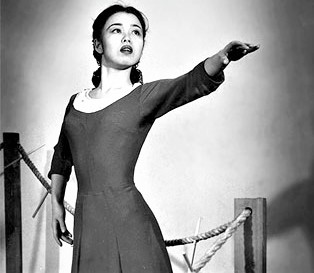It was July 12, 2014. I was one among many — young students, seasoned faculty, seated and standing in the hushed audience at the Martha Graham School on NYC’s upper east side, listening to Yuriko Kikuchi, at the young age of ninety-four, talk about her years with the icon, Martha Graham. I soon intuited that reserve, that hesitation, creeping into her mild voice, looking back to the early 1940s when she joined the Company. I had picked up on that reticence several times before, in long, ruminative conversations with Linda Hodes and Stuart Hodes and Robert Cohan and Marnie Thomas and Terese Capucilli and so many other veteran members of the Graham dance-family. “We were friendly, yes,” Yuriko said of Martha, “but never friendly friendly.” There were boundaries, naturally, as there are between any dancer and the choreographer setting works upon her. There were delineated boundaries between Martha Graham’s deeply-embodied ideas unfurling out of her blood-memory into the studio where they would be sometimes demonstrated and, at others, inferred; and, yet again, movement was purposefully elicited, derived from the dancer. But always, be it superimposed or drawn out, artistic inspiration came from Martha Graham’s distance. She demanded intimacy of energy, wanted to see the effort of others’ strenuous work from a singular perspective, alone, inside her mystical carapace. “Martha never confided anything to her dancers,” Yuriko continued. “We were like her different colors, for her to use as a painter.” This isn’t meant as expedient, I jotted in my notebook that summer afternoon, eight years ago. If Graham were the painter, then her palette was an infinite melange of hues. And within the span of one dance, Yuriko was a kaleidoscope brought to life.
